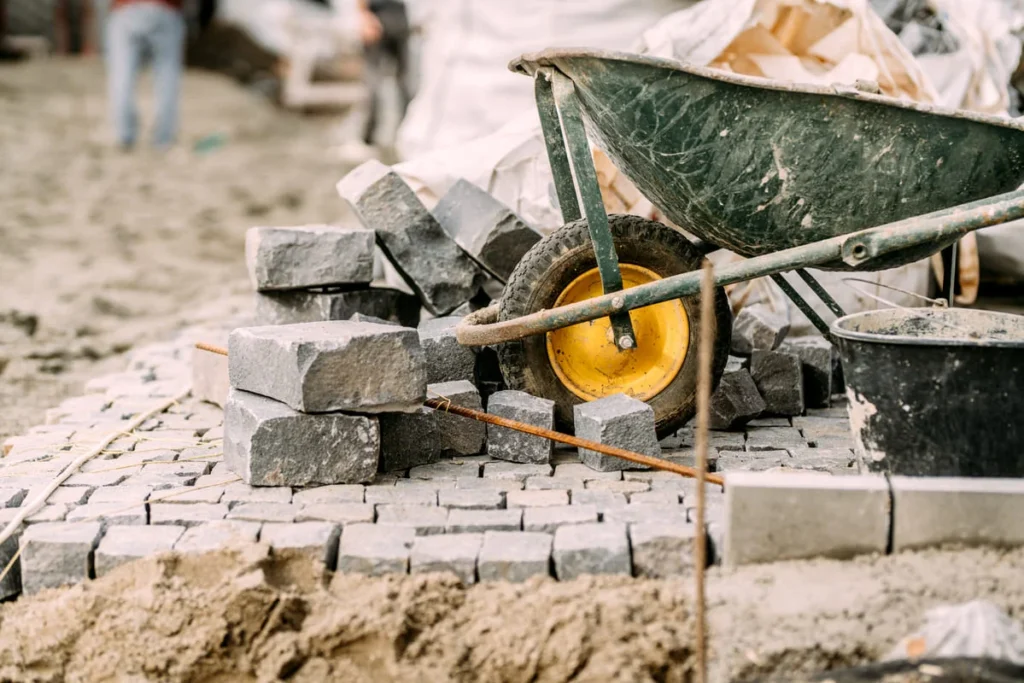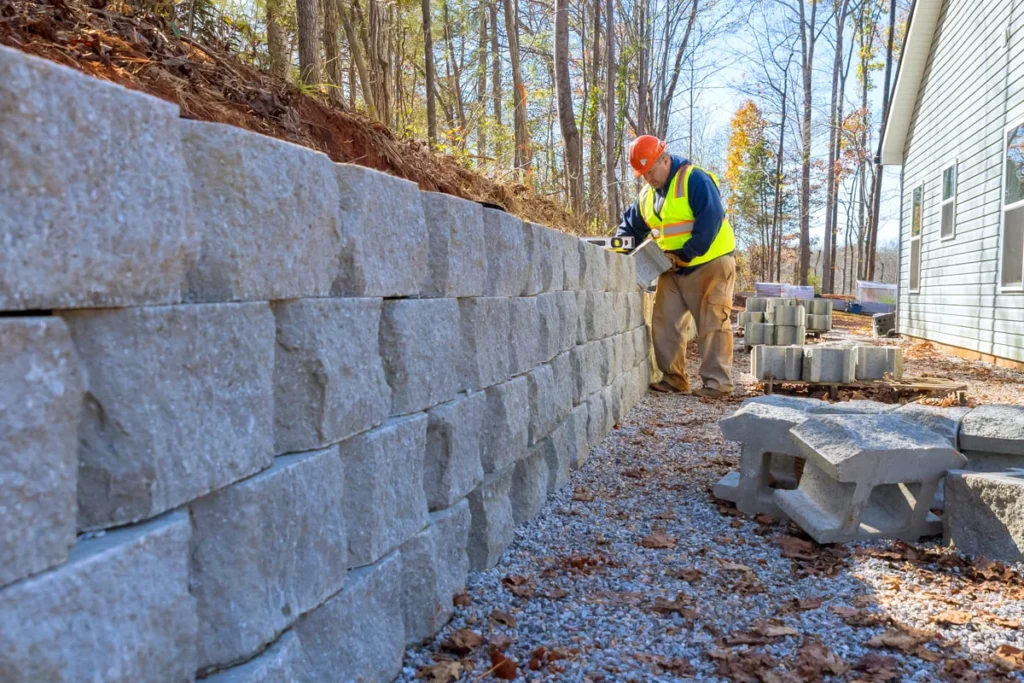
A Comprehensive Guide
Retaining Walls
Enhance your landscape's structure and prevent soil erosion with our expertly crafted retaining walls. Designed to be both functional and attractive, our retaining walls add depth and dimension to your yard.
How to start?
1. Assess Your Needs
- Determine the purpose of your retaining wall. Is it for landscaping aesthetics, preventing soil erosion, or creating a flat area in your yard?
2. Design and Planning
- Consult with a professional to create a design that suits your needs and complies with local regulations.
- Consider the height, length, and materials for the wall. Common materials include concrete blocks, stone, brick, and timber.
3. Obtain Permits
- Check with your local building authority to see if you need a permit. Regulations vary by location and the size of the wall.
4. Prepare the Site
- Clear the area of debris and vegetation. Mark the location of the wall with stakes and string.
5. Foundation Preparation
- Excavate a trench for the base. The depth depends on the wall height; typically, it should be about one-tenth of the wall height.
- Fill the trench with a layer of gravel for drainage and compact it.
6. Construction
- Begin laying the first course of materials. Ensure it is level and properly aligned.
- Continue stacking materials, ensuring each layer is level and securely placed.
7. Backfilling
- As you build the wall, backfill with gravel or soil to provide support and proper drainage.
8. Finishing Touches
- Add capstones or other finishing materials to the top of the wall.
- Landscape around the wall as desired.

Why Choose Retaining Walls?
- Erosion Control.
- Increased Usable Space
- Aesthetic Appeal
- Structural Support
- Property Value
The Amazing Benefits
1. Durability
- Made from robust materials, retaining walls are built to last and withstand harsh weather conditions.
2. Low Maintenance
- Once constructed, retaining walls require minimal maintenance, making them a cost-effective long-term investment.
3. Versatility
- Retaining walls can be designed to fit various styles and functional needs, from purely functional to highly decorative.
4. Environmental Benefits
- By reducing soil erosion and managing water runoff, retaining walls contribute to a healthier environment.
5. Enhanced Landscaping
- They provide a canvas for creative landscaping ideas, such as terraced gardens and integrated seating.
Frequently Asked Question.
Permits are often required, especially for walls over a certain height. Check with your local building authority for specific regulations.
The best material depends on your needs and preferences. Concrete blocks, stone, brick, and timber are all popular choices with their own advantages.
Costs vary widely based on materials, size, design complexity, and labor. It’s best to get multiple quotes from contractors for an accurate estimate.


